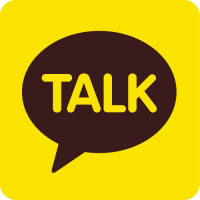Seoul, South Korea’s vibrant capital, is renowned for its cutting-edge public transportation system. Whether you're marveling at the royal grandeur of Gyeongbokgung Palace or hunting down the trendiest fashion in Myeongdong, Seoul’s buses and subways are your ultimate allies for getting around efficiently, affordably, and stress-free. Here's everything a foreign traveler needs to know to master the city’s public transit system.
.jpg) |
| Seoul Bus and Subways |
Seoul Subway System: Fast and Convenient
Seoul’s subway network is vast, modern, and foreigner-friendly. With 23 lines crisscrossing the city and stretching into surrounding areas, it’s the go-to choice for both locals and tourists.
Top Tips for Subway Riders:
-
Major Lines and Attractions:
-
Line 4: Reach hot spots like N Seoul Tower and Dongdaemun Market.
-
Line 2: Perfect for visiting Gangnam, Hongdae, and other key districts.
-
AREX (Airport Railroad Express): Connects directly to Incheon and Gimpo airports.
-
-
T-Money Card:
-
A must-have for convenient travel.
-
Buy one at any convenience store or subway station.
-
Rechargeable and usable on buses, subways, taxis, and even some shops.
-
-
Helpful Apps:
-
Subway Korea App: Offers route planning, real-time train updates, and is available in English.
-
Seoul TOPIS: Official transportation platform for live subway and bus data.
-
Seoul Buses: Budget-Friendly and Local-Savvy
Buses in Seoul are a great way to explore areas that aren’t directly served by the subway. They’re clean, reliable, and categorized by color for easy navigation:
-
Blue Buses: Long-distance lines connecting outer suburbs and downtown Seoul.
-
Green Buses: Short-distance neighborhood routes, often linking subway stations.
-
Red Buses: Express services for commuting between Seoul and nearby cities.
-
Yellow Buses: Circular routes within key districts, ideal for sightseeing.
Bus Riding Essentials:
-
Bus stops display route numbers clearly, and most have English signage.
-
Announcements on major lines are made in Korean and English.
-
Check real-time schedules on the Seoul TOPIS website.
Essential Tips for Foreign Travelers
-
Plan Before You Ride
Use Naver Map or Google Maps for live directions, estimated arrival times, and transfers. Both support English and several other languages. -
Stay Online
Grab a Korean SIM card or rent a portable Wi-Fi device upon arrival at the airport for constant connectivity. -
Mind the Rush Hours
Morning (7–9 AM) and evening (6–8 PM) commutes can be very crowded—try to plan around them when possible. -
Travel Smart with Tourist Cards
Consider the Discover Seoul Pass which includes subway and bus use, plus entry to popular attractions.
Your Ultimate Travel Toolkit
Bookmark these websites and apps before your trip:
-
🔗 Seoul Public Transportation Info (TOPIS): For real-time subway and bus information.
-
📍 Naver Map: Highly accurate, English-supported map app for Korea.
-
🚇 Subway Korea App: Easy-to-use subway navigation and updates.
Getting around Seoul is easier than you think. With these tools, a T-money card in hand, and a bit of planning, you’ll blend right in with the locals—zipping from palace courtyards to neon-lit streets like a pro. Enjoy the ride and make the most of everything this dynamic city has to offer!


.jpg)
